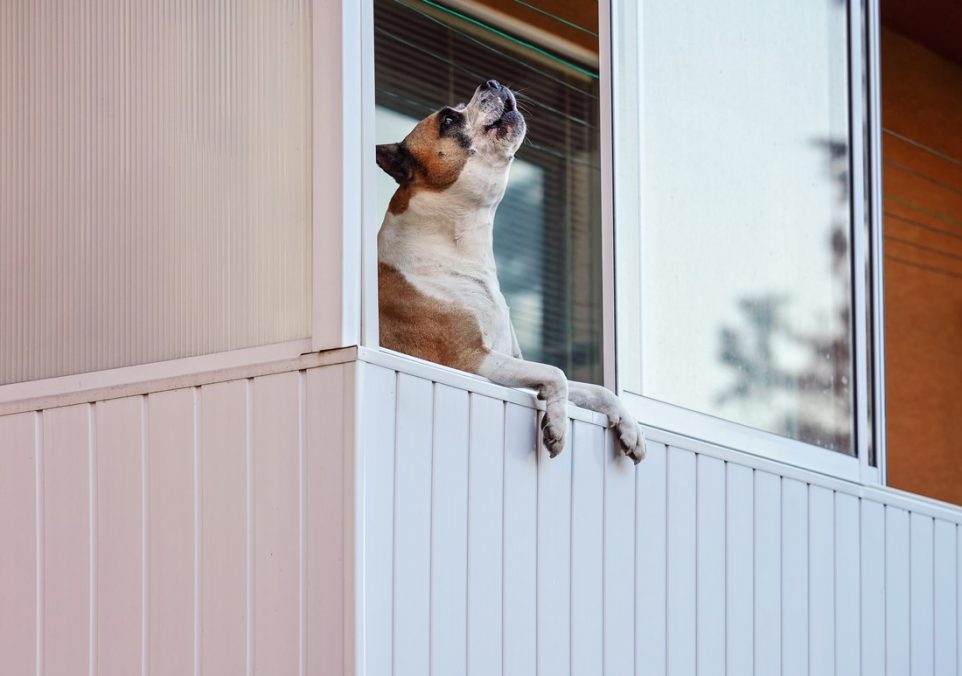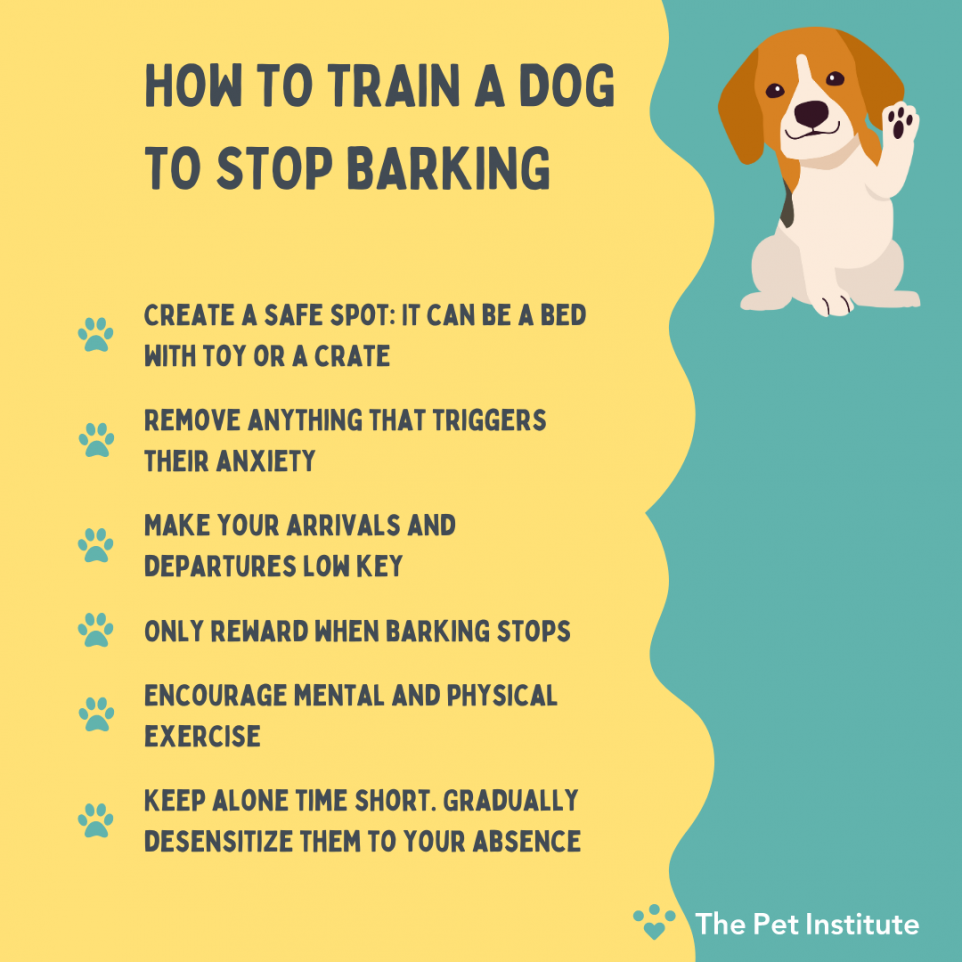My Dog Barks All Day While I Am At Work. Here’s How To Make It Stop

Dealing with a dog that barks incessantly while you’re away at work can be a source of stress and concern for any pet owner. It’s a common challenge that many face, leading to disturbed neighbors and the underlying worry about your dog’s well-being. It’s crucial to understand why dogs engage in this behavior and find effective ways to address it.
This blog delves into five professional tips to help you minimize and manage your dog’s barking. These tips range from providing adequate physical and mental stimulation to considering tools like a dog bark collar as part of a comprehensive approach. The goal is to ensure your furry friend is as content and quiet as possible in your absence. By implementing these strategies, you can create a more peaceful environment for your dog and a more harmonious relationship with your neighbors.
Why Do Dogs Bark?
Let’s start with genetics. Just like people inherit traits from their parents, dogs do, too. Certain breeds are more prone to barking due to their genetic makeup. For instance, smaller breeds often tend to be chattier than their larger counterparts. This isn’t about being annoying—it’s their way of reacting to the world around them. Managing this involves a bit of strategy, like providing ample opportunities for your dog to be active and vocal in appropriate settings, like during walks or in the park, where their barking won’t disturb the peace.
Stress is another biggie when it comes to why dogs might bark excessively. A dog that’s cooped up all day or doesn’t get enough mental stimulation is bound to get stressed. This pent-up energy often manifests as continuous barking. The fix? More exercise, more playtime, and anything that keeps their mind engaged and bodies active. It’s amazing how a simple increase in activity can turn a restless barker into a happy, quiet companion.
Changes in their routine or environment also play a huge role. Dogs are creatures of habit, and anything from moving houses to a new family member can throw them off. If their new environment is noisier or busier, it might trigger more barking. Being patient and giving your dog time to adjust to these changes is key. Also, remember, dogs have keen senses that pick up on stuff we barely notice, so what seems minor to us can be overwhelming to them.
Health issues can also cause a dog to bark more. It’s sad but true that if a dog is in pain or discomfort, they might bark to communicate their distress. This could be due to aging or specific ailments that impact their senses and nerves, making them more prone to overreact to their surroundings. Regular check-ups at the vet can ensure your dog isn’t barking because of pain or discomfort.
And then there’s the attention and training aspect. Dogs often bark to get our attention, and how we respond to this can either help or worsen the behavior. Accidentally rewarding barking with treats or play can make the problem stick. It’s important to teach your dog that silence has its perks, too.
Your Dog May Have Separation Anxiety
Addressing separation anxiety in dogs effectively begins with a thorough understanding of why it occurs and how we can mitigate its effects before it becomes a problem. Dogs are inherently social creatures, thriving on companionship and interaction. When left alone, they can experience distress simply because their natural inclination is to be part of a group. This can manifest as separation anxiety, a condition characterized by stress and anxious behaviors when separated from their owners.
Separation anxiety in dogs can stem from their pack mentality. In the wild, dogs are rarely alone, always engaging with members of their pack. This constant interaction is pivotal to their sense of security. However, our modern lifestyles dictate periods where they must be alone, which contradicts their instinctual need for company. This clash of natural instinct and learned behavior can lead to anxiety.

Build a Foundation for Security
The initial step in managing separation anxiety is to create an environment that feels safe and secure for your dog, even in your absence. This involves establishing a specific area in your home where your dog can feel comfortable and relaxed. This could be a cozy corner with their bed, toys, and items that carry your scent to provide comfort. The goal is to make this space a positive place where they feel secure and content.
Implement a Predictable Routine
Dogs benefit immensely from routine as it gives them structure and predictability to their day. Structuring your departure and return times as part of this routine helps your dog understand that although you leave, you will return. This predictability can significantly reduce anxiety because the dog learns to anticipate your absence and presence, making it less stressful.
Expert Note: Incorporating practice sessions where you leave the house for short periods can help your dog get used to the idea of being alone without becoming anxious. Gradually increasing the duration of these sessions can be effective in building their tolerance to solitude.
Once you’ve established a secure space and a routine, the next step involves training your dog to handle solitude positively and quietly. This is crucial because while a secure environment provides comfort, active training reinforces calm behavior.
How To Train Your Dog To Not Bark While You’re Away
When training your dog to stay calm and quiet while you’re away, the key is to approach this with patience and a clear plan. Many dogs experience some anxiety when left alone because they are naturally social creatures. To help them adapt, we need to train them in a way that’s both gentle and consistent.
Increase Exercise and Mental Stimulation
Start by addressing the root of the barking or anxiety. For many dogs, it’s not just about being alone—it’s about boredom or pent-up energy. So, the first step is increasing both physical and mental exercise. More than just adding an extra walk, engage your dog in interactive play like tug-of-war or fetch during your walks. Use puzzle feeders that encourage them to think and work for their food. These activities help burn off the energy that might otherwise fuel anxious behavior.
Gradual Desensitization to Your Absence
Starting small is key. Begin by leaving your dog alone for just a few minutes and slowly extend the duration of your absence. The trick is to keep your departures and arrivals low-key to avoid triggering anxiety. You don’t want your dog to associate these moments with heightened emotions—both yours and theirs.
Expert Note: If your dog shows signs of stress, it’s okay to take a step back and shorten the alone time, gradually building it back up as they become more comfortable.
Create a Safe and Comforting Space
Find a spot in your home where your dog feels secure and relaxed. This could be a cozy corner with their bed, some toys, and maybe an item that smells like you, like an unworn T-shirt. This setup helps in creating an environment where they can feel at ease even when you’re not around.
Crate Training: If your dog is crate trained, the crate can be this safe space. It’s essential that the crate is always associated with positive experiences—never use it as a punishment.
Introduce Soothing Background Noise
Leaving on some background noise like radio, TV, or even calm music can help mimic the usual hum of your active house and soothe your dog’s nerves.
The type of noise can make a difference. Some dogs might find human voices more comforting than music, so playing a talk radio station could be beneficial.
Reward Calm Behavior
Recognize and reinforce calm behavior without relying too heavily on treats. Start by treating frequently, then gradually replace treats with verbal praises or gentle petting as they show signs of progress.
Reward Timing: It’s crucial to reward your dog immediately after they display calm behavior to help them make the connection between their tranquility and positive reinforcement.
Remember, the training process is gradual and requires consistency and patience. It’s not uncommon for it to take weeks or even months for a dog to fully adjust to being alone. Regular training sessions, even just a few minutes at a time, can significantly improve their behavior and reduce anxiety. Always celebrate small victories and progress, no matter how minor they may seem, and keep the training sessions positive and reward-based.
Your Pet’s Best Interest, Always
At Pet Institute, we take pet care seriously. We're dedicated to transparency, impartiality, and the well-being of your pets in every article, review, and recommendation we provide. Our unwavering commitment to these principles ensures that you, our valued reader, always receive reliable and unbiased information. Let us be your trusted guide in the world of pet care and companionship.